 1990 Mitsubishi Diamante I Dimensions, Size & Specs
1990 Mitsubishi Diamante I Dimensions, Size & SpecsMeasurements of the 1990 Mitsubishi Diamante I, engineered for optimal performance and comfort
| Dimensions | |
|---|---|
| Length: | 4740 mm186.6 in15.6 ft |
| Width: | 1775 mm69.9 in5.8 ft |
| Height: | 1410-1420 mm55.5-55.9 in4.6-4.7 ft |
| Trunk Capacity: | 418 liter14.8 cu ft |
| Weight Specifications | |
| Curb Weight: | 1400-1680 kg3086-3704 lbs |
| Tire Specifications | |
| Tire Sizes: |
|
The Mitsubishi Diamante I, produced from 1991 to 1996, is a mid-size sedan that embodies the design and engineering trends of the early 1990s. With an overall length of 4740 mm (186.6 inches), a width of 1775 mm (69.9 inches), and a height ranging from 1410 to 1420 mm (55.5 to 55.9 inches), the Diamante I presents a sleek and balanced profile that offers both spaciousness and aerodynamic efficiency. Its curb weight varies between 1400 and 1680 kilograms (3086 to 3704 pounds), reflecting different trims and equipment levels, which balances performance and comfort effectively. The sedan provides a sizable luggage compartment of 418 liters (14.8 cubic feet), suitable for family trips or daily use, ensuring practicality without compromising the vehicle’s elegant styling. Tire options for this generation include 195/70 R14 S, 205/65 R15 H, and 215/60 R15 H sizes, allowing for a range of driving dynamics and ride comfort suited to different preferences. As a flagship sedan of Mitsubishi during the early 90s, the Diamante I combines solid build quality with advanced features of its era, making it a notable choice in the midsize sedan segment. This generation blends the classic sedan dimensions with reliable engineering, providing a confident road presence and adequate interior space for passengers and cargo alike.
Discover the standout features that make the 1990 Mitsubishi Diamante I a leader in its class
Have a question? Please check our knowledgebase first.
The Mitsubishi Diamante I, produced from 1991 to 1996, has a length of 4740 mm (186.6 inches), making it a mid to large-sized sedan that offers ample interior space combined with a sleek exterior profile. Its width is 1775 mm (69.9 inches), which provides a comfortable cabin width suitable for driver and passengers. The height ranges from 1410 mm to 1420 mm (55.5 to 55.9 inches), contributing to a low-slung sporty appearance that aids aerodynamics while still providing sufficient headroom inside. Overall, these dimensions establish the Diamante I as a well-proportioned sedan balancing spaciousness and a sporty design.
The curb weight of the Mitsubishi Diamante I varies between 1400 kg and 1680 kg (3086 lbs to 3704 lbs), depending on the specific trim and equipment levels. This weight range indicates a relatively heavy vehicle for its class during the early 1990s, which helps provide stability, a smooth ride, and solid build quality. The weight influences performance by contributing to the car's ride comfort and road grip; however, a heavier weight can slightly reduce acceleration and fuel efficiency compared to lighter sedans. Despite this, Mitsubishi tuned the Diamante's engine and suspension to balance power, comfort, and fuel consumption to appeal to luxury sedan buyers.
The Mitsubishi Diamante I offers a luggage capacity of 418 liters (approximately 14.8 cubic feet), which is quite generous for a sedan of its era. This capacity allows users to carry multiple suitcases or shopping bags with ease, enhancing the vehicle's practicality for families or those needing space for longer trips. The trunk is thoughtfully designed to maximize usable space and accessibility, making loading and unloading convenient. For daily commuting or weekend trips, the Diamante I's luggage capacity strikes a good balance between passenger comfort and cargo versatility.
Yes, the Mitsubishi Diamante I fits comfortably into a standard garage. Its length of 4740 mm (186.6 inches) and width of 1775 mm (69.9 inches) are within common dimensions for mid-sized sedans, allowing it to park without difficulty in typical residential garages, which often measure around 6 meters (20 feet) in length and 2.4 to 3 meters (8 to 10 feet) in width. The relatively low height of approximately 1410-1420 mm (55.5-55.9 inches) also makes it suitable for garages with average ceiling heights, providing easy entry and exit without clearance issues.
With a width of 1775 mm (69.9 inches), the Mitsubishi Diamante I is fairly typical for mid-size sedans produced in the early 1990s. Many competitors such as the Toyota Camry and Honda Accord from that period had widths ranging from 1750 to 1800 mm (68.9 to 70.9 inches). This width ensures a spacious interior while maintaining maneuverability in urban settings. The Diamante's width supports comfortable seating for five passengers and helps contribute to a stable ride on highways without making the car cumbersome in tighter spaces.
The Mitsubishi Diamante I came with several tire size options: 195/70 R14 S, 205/65 R15 H, and 215/60 R15 H. The 14-inch tires (195/70 R14) emphasize ride comfort and a softer suspension feel, ideal for smooth cruising. The 15-inch tires (205/65 R15 and 215/60 R15) provide better handling and cornering stability due to a wider contact patch and lower sidewall height, enhancing grip and responsiveness without compromising too much ride quality. These options allowed buyers to prioritize either comfort or sportier driving dynamics based on their preferences.
The Mitsubishi Diamante I (1991-1996) marked an evolutionary step from its predecessor, featuring slightly increased dimensions to improve interior space and road presence. Although the predecessor model varied depending on the exact lineage, the first generation Diamante generally grew in length and width to accommodate more passenger comfort and offered a more modern, aerodynamic silhouette. The increased size also allowed Mitsubishi to upgrade safety features and luxury amenities, placing the Diamante I firmly in the mid-size luxury sedan segment with competitive dimensions against rivals. Overall, the dimensional growth improved practicality without sacrificing agility.
Comparing the Mitsubishi Diamante I with similar mid-size sedans of the early 1990s, such as the Honda Accord, Toyota Camry, and Nissan Maxima, it falls squarely within the typical size range but slightly leans towards being more upscale and spacious. Its length of 4740 mm (186.6 inches) is comparable to the Maxima's and slightly longer than the Accord or Camry of that time. The width of 1775 mm (69.9 inches) provides a roomy cabin competitive in its class. The luggage capacity of 418 liters surpasses some rivals, making it a practical choice for buyers seeking a blend of luxury and utility. Mitsubishi’s focus on a sporty yet elegant design also differentiates the Diamante I dimensionally and stylistically.
The height of the Mitsubishi Diamante I ranges from 1410 mm to 1420 mm (55.5 to 55.9 inches). This slight variation may depend on different trims or optional equipment like roof molding or suspension setups. The car’s relatively low height contributes to a sportier profile while still providing adequate interior headroom for front and rear passengers. Most occupants will find the headroom comfortable for daily driving and longer trips. The low roofline enhances the aerodynamic efficiency of the vehicle, which can slightly improve fuel economy and reduce wind noise inside the cabin.
The Mitsubishi Diamante I, produced from 1991 to 1996, was positioned as a luxury mid-sized sedan offering a balance of performance, comfort, and advanced technology for its time. It featured a stylish exterior design with aerodynamic lines, a spacious interior with high-quality materials, and various convenience options such as power windows, air conditioning, and advanced audio systems. Engine choices provided solid power and smooth performance, appealing to buyers looking for a premium alternative to more traditional luxury sedans. The Diamante's reputation combined sporty handling with luxury appointments, making it a respected choice in its segment during the early to mid-1990s.
Discover similar sized cars.
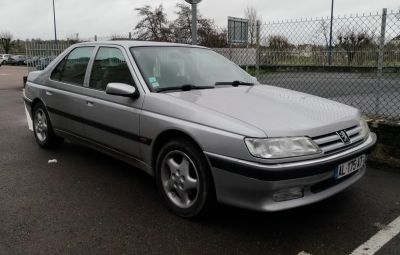
| Production: | 1989-2000 |
|---|---|
| Model Year: | 1989 |
| Length: | 4765 mm187.6 in |
| Width: | 1799 mm70.8 in |
| Height: | 1411-1418 mm55.6-55.8 in |
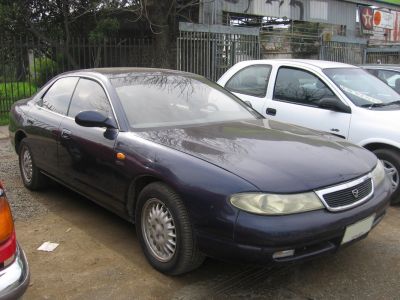
| Production: | 1992-1998 |
|---|---|
| Model Year: | 1992 |
| Length: | 4695 mm184.8 in |
| Width: | 1750 mm68.9 in |
| Height: | 1340 mm52.8 in |
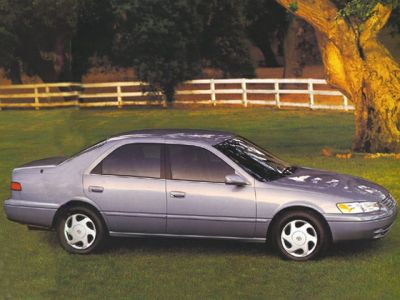
| Production: | 1996-1999 |
|---|---|
| Model Year: | 1996 |
| Length: | 4765 mm187.6 in |
| Width: | 1785 mm70.3 in |
| Height: | 1410-1430 mm55.5-56.3 in |
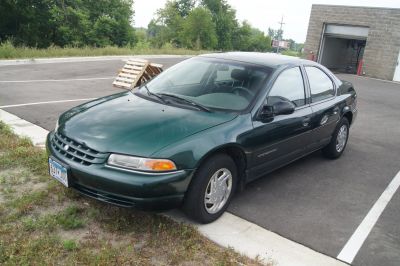
| Production: | 1995-2000 |
|---|---|
| Model Year: | 1996 |
| Length: | 4740 mm186.6 in |
| Width: | 1803 mm71.0 in |
| Height: | 1374-1380 mm54.1-54.3 in |
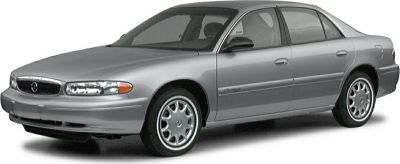
| Production: | 1997-2005 |
|---|---|
| Model Year: | 1997 |
| Length: | 4790-4940 mm188.6-194.5 in |
| Width: | 1850 mm72.8 in |
| Height: | 1440 mm56.7 in |
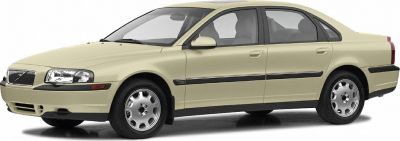
| Production: | 1998-2003 |
|---|---|
| Model Year: | 1999 |
| Length: | 4822 mm189.8 in |
| Width: | 1832 mm72.1 in |
| Height: | 1434-1450 mm56.5-57.1 in |

| Production: | 1998-2004 |
|---|---|
| Model Year: | 1999 |
| Length: | 4740 mm186.6 in |
| Width: | 1780 mm70.1 in |
| Height: | 1390 mm54.7 in |
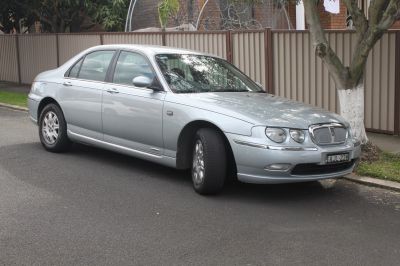
| Production: | 1999-2004 |
|---|---|
| Model Year: | 1999 |
| Length: | 4747 mm186.9 in |
| Width: | 1778 mm70.0 in |
| Height: | 1424 mm56.1 in |
